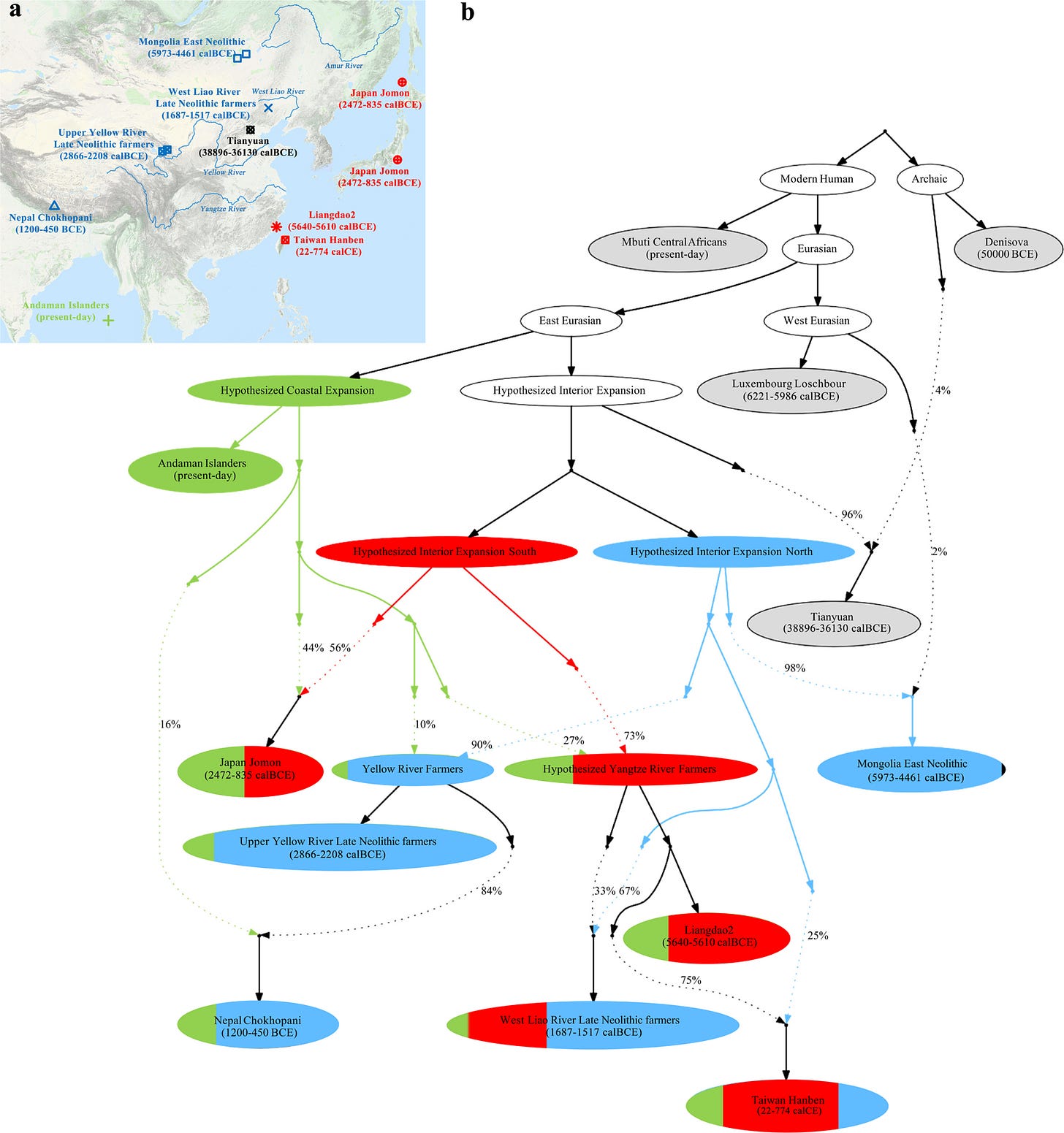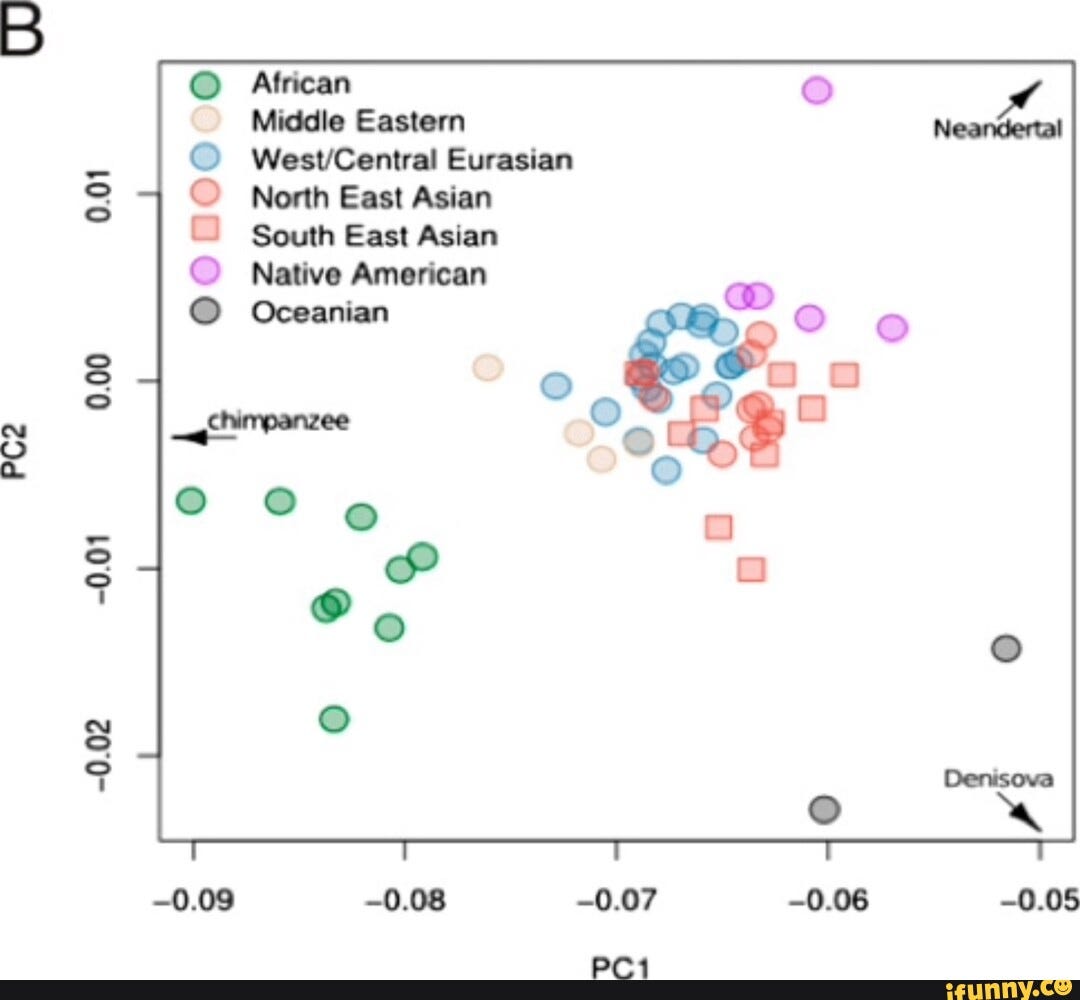The Native American Question
Are first peoples *actually* first peoples? Here's why I don't think so.
One of the most significant notions of our day, a very inconsistent notion basically meant for the sole purpose of kvetching about White people, is this idea of “indigeneity”. While the colloquial definition of “indigenous” means the first people to be in some place, or at the very least the people who were there before some other group, the usual suspects in social science lecture halls and DEI departments have tactfully altered the “official” definition relies on this group basically just being marginalized by White people 90% of the time. After all, we can’t have Europeans using the same ethnocentric rhetoric of “indigeneity” that we allot for Native Americans and the like. If you want to have a laugh, I’d recommend going to the Native Land website. Yes, somehow the Saami are indigenous to Scandinavia, but the Finns are not indigenous to Finland… Even though the Saami arrived in Scandinavia well after the Paleo-Germanic Battle Axe Culture had already spread into what would later become Saami and Finnish territory. Somehow Greenlandic Inuits are indigenous, despite basically having full autonomy, but Basques aren’t. Somehow, for some reason, Greeks are not indigenous to Ionia, despite living there earlier than Polynesians (who are apparently considered indigenous) ever lived in Hawaii. And for some reason, the Hausa are considered indigenous over the Yoruba, even though the Hausa probably originated from an outside migration? It’s very obvious what’s going on here, let’s just leave it at that.
But, the colloquial definition still has a lot of sticking power. Most people still understand indigeneity as meaning “the first people to be there” or something like that, and only sometimes retreat to the constructed definition when someone brings up European indigeneity. Or they’ll point out that Europeans are the product of multiple waves of people, which is true. The idea being, that Europeans have always been invading and subjugating their enemies to access their land, while indigenous peoples simply walked in. This… Is simply not true. I mean, obviously. Obviously native peoples have always been invading each others’ land, but I don’t even believe that Native Americans or Australian Aboriginals were actually native to their land. And it’s plainly obvious that the Bantus of South Africa were not native to their land either. Polynesians also are not indigenous to much of their lands, but I really want to focus on the previous two.
So first, I have two reasons as to why I do not believe Native Americans are the first or only people to settle the Americas. Firstly, South American indigenes have a unique genetic signal connecting them to Australoids such as Andamanese Islanders and Papuans. This is very archaic as well, it probably isn’t some sort of recent migration. Especially considering that it peaks in the Amazon Rainforest, not on the coast.
What is more likely to me, is that this is a signal from a once much more prominent early East Eurasian population, either basal to both East/Northeast Asians and Australoids, or maybe a very early branch off of the lineage which would later become Northeast and East Asians. This population was mostly pushed out of inland Asia by the ancestors of what we call “Mongoloids” but still has more significant genetic ties to certain Indo-Pacific populations, as well as Amazonian indigenes. In this study he is represented through ‘Tianyuan Man’. Like all archaic DNA, it’s very hard to model consistently due to low quality and lack of samples from that era, so some studies place Tianyuan Man basal to all East Asians (including Australoids), some place him very early on the Australoid branch, and others place him very early on the “Mongoloid” branch. But it’s very clear that there is some sort of ‘deep’ East Asian population which is being gravitated towards by a few key groups.
Looking at the PCA above, it seems that three important groups gravitate close to Tianyuan, which is expressed in the study as well. That is, the Jomon, the Hoabinhians, and Tibetans. Now, keep in mind, Tibetans might only be gravitating towards this as a result of Indian DNA. But what do these populations have in common? Both the Hoabinhians and Jomon (whose modern descendants are the Ainu in Japan, with Yamato Japanese only having very slight admixture) were pacific peoples pushed out of their lands, or to the margins, by invading peoples with a more East Asian profile. It has been suggested that there was an earlier expansion of this sort of less diversified East Eurasian DNA across the Indo-Pacific, before the expansion of “East Asian” proper.
Oh yeah, just a side note. Some people think that Jomon were secret Caucasian people in Japan. While yes, they were morphologically similar to Caucasoids, this is more of a case of convergent evolution, just like how to the untrained eye an Andamanese person could appear to be a Black African. Jomon had no ancestry from any European-related population, neither do modern Ainu. Cavalier spread this idea with no evidence during the later period of his time on iFunny, even though I repeatedly told him not to. I think the whole business about his Japanese ancestry being Ainu was total bullshit anyways. He posted his Grandma on TikTok (a site he also used to browse dozens, if not hundreds of accounts dedicated to men farting) and she looked like a typical Japanese woman. Hopefully Roberto won’t be disappointed!
Anyways… The reason this ancestry is probably only found in South Americans, particularly in Amazonians, is because the second and much more prominent wave from Siberia probably pushed it out of North America. Since Americans spread first along the coast, and then went inland, it is also reasonable to assume that it was pushed westward into the Amazon Rainforest. But… Why do I think that this is some archaic group?
Well, the simple fact is, there is a good amount of archaeological evidence for human habitation of the Americas well before the agreed upon migration into the Americas through Beringia c. 23,000-13,000 BC. For example, this site in Mexico dating to 33,000 years ago. There is even earlier evidence of controlled fire use in Brazil. It’s possible there were actually several waves of people in the Americas, some of which probably went extinct before other waves became. Of course, Native American groups regularly stifle attempts at genetic studies of their ancient burial grounds, ostensibly out of respect for their dead but perhaps also out of fear that the DNA of these skeletons will uproot their claims to whatever land they live on. The Solutrean Hypothesis has some popularity in right-wing circles, which suggests that Solutreans (Paleolithic European culture) found their way to the Americas through the Atlantic. I find this theory to be a bit iffy now that we have more ancient Native American DNA. We know, for example, that Clovis and Kennewick Man were Native Americans. Albeit, they did have European DNA, as do all Native Americans, from their Ancient North Eurasian component. This might explain why they had a sort of Caucasian look to their skulls. Also, the idea of the Solutreans traversing the massive ice sheets of the Ice Age all the way to Greenland, let alone Canada, is a bit drastic to me unless there is more corroborating evidence. The archaeological connections between stone industries might have some stuff of interest, but the presence of mitochondrial DNA X2 and Y-DNA R1b in the Americas is not probably not strong enough evidence to deduce that this DNA is from Solutreans. Yes, X2 is found in modern Anatolians and also Mycenaean Greeks, as well as Native Americans. It’s certainly a bizarre phenomenon, but it could be from Ancient North Eurasians. Albeit, there isn’t a lot of Ancient North Eurasian DNA in Mycenaean Greeks or Anatolians, meanwhile more ANE-rich populations like Northern Europeans are not X2-rich. Also on the side of X2, is that it isn’t entirely clear if X2 had mutated into existed by the time ANE admixture went into the ancestors of Native Americans. R1b on the other hand, I am pretty sure is the result of recent European admixture. If it wasn’t that would be big, but there isn’t a lot of data on this. If R1b in these Northeastern Native Americans was something unrelated to the R1b in Europeans, for example if it was a very early branch off like R1b-V88 (found today among Hausa and Sardinians, which is why I think Chadic languages come from Neolithic Europe) then that would be big, but I don’t know of any evidence of this.
Anyways, what about Australian Aboriginals? Well, it’s pretty simple. There were humans in Australia well before the modern genetic profile of Australian Aboriginals even could have existed. Particularly, the Lake Mungo 3 (LM3) Skeleton in Australia, dating 43,000-65,000 years ago. On top of that, attempts to find mitochondrial DNA from LM3 found that it didn’t look like something any modern Aboriginal Australians or Eurasians in general would have. It was later declared to have been inconclusive after controversy from the Aboriginal community, and eventually the Aboriginal community took Mungo from the scientific community out of “respect for the dead” (LOL).
Anyways, besides that, it would be impossible for LM3 to be an Australian Aboriginal as genetic studies have determined that Austrian Aboriginals are phylogenically related to Papuans, and other Eastern Eurasians, albeit extremely drifted. We don’t have any evidence for West Eurasians splitting off from East Eurasians until after 40,000 BC. If Australoids split off from East Eurasians before West Eurasians split off from East Eurasians, then West and East Eurasians would form a clade with respect to Australoids. I have not ever seen any substantial evidence for this being the case.
Looking at PCAs also sort of suggests a “deep” ancestry in Sahulians, as they err towards East Africa. Some studies have also suggested that this is a real trend, with slight african-like ancestry in these groups. The reason it errs towards Africa, is that all pre-OoA groups will trend towards Africa not as a product of having a particular affinity for Africa, but as a product of having an unusual lack of affinity for Eurasians.
The other explanation I could see for this is the elevated Denisovan DNA in such groups. But I don’t know if Denisovan would even go in the direction of Africa.







Dawg I forgot about the cavalier fart era
I would recommend checking out Dr. Nathaniel T Jeanson and his work. He had done a lot of research on haplogroup Q.